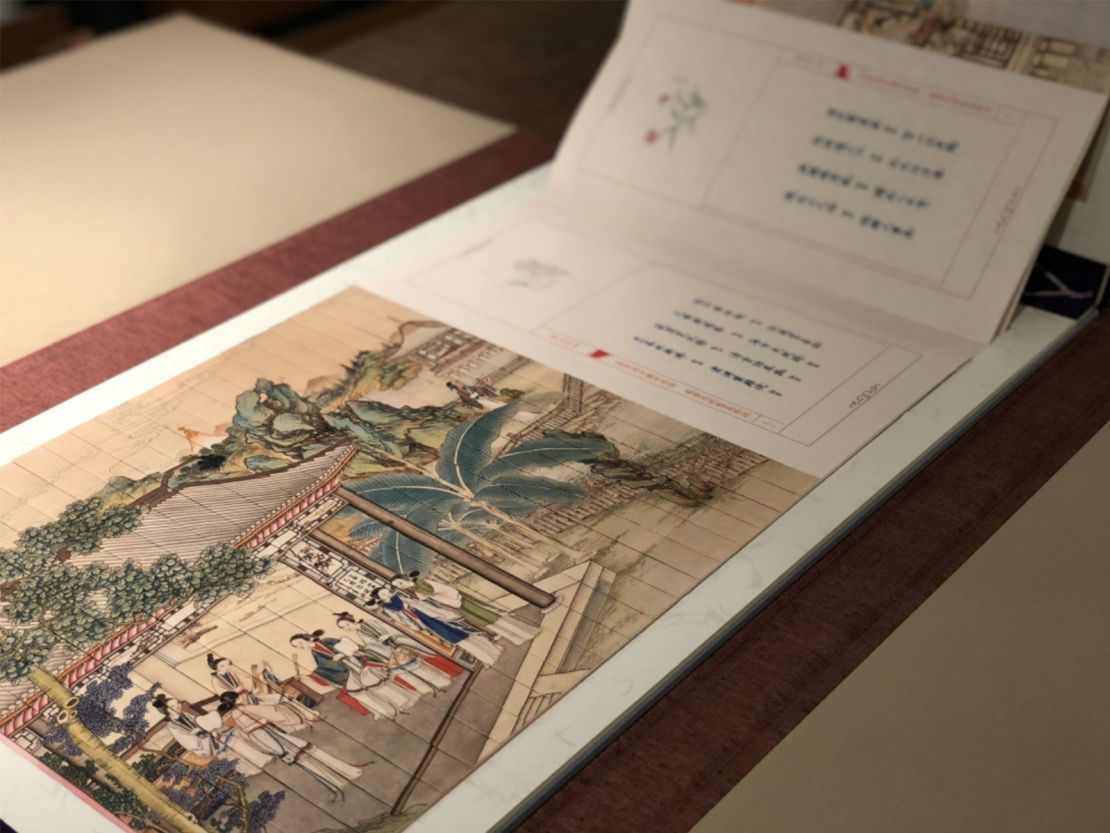At his studio in Beijing, artist Zhang Xiaodong layers hundreds of sheets of thin paper on top of one another until they form a complete and impeccable image. When the chapters of his elaborate books are unfolded, the pages move like the bellows of an accordion.
This ancient Chinese art, known as dragon scale bookbinding, stretches back more than 1,000 years to the Tang dynasty. Passed down between generations of royals and literate upper class families, the finished works were thought to resemble dragons, each page appearing like a “scale.”
With few of the books surviving to the present day, the bookbinding technique was at risk of becoming obsolete before Zhang decided to research and revive it. Using the Forbidden City Palace Museum’s one existing dragon scale book for reference, he spent four years printing and binding his latest work, which was exhibited at the recent Art Central fair in Hong Kong.
The art of dragon scale bookbinding
Zhang is the first artist to practice this forgotten art in the modern age, according to the exhibition’s curator, Ying Kwok.
“When there is a slight movement in the air, (the pages) flow, giving life to the book itself,” Kwok said in a phone interview. “This makes the whole experience of reading a book three-dimensional.”
Reviving a forgotten craft
Zhang’s latest work is a dragon scale bookbinding version of the classic Chinese novel “Dream of the Red Chamber.” His intricate 120-chapter book comes with painstaking recreations of 230 images by Qing Dynasty artist Sun Wen. Combining ancient folding and cutting techniques with modern technology, he prints pictures and text onto delicate paper at a factory, before cutting and slicing them to recreate Sun’s paintings.

Previously, Zhang also made a copy of the ancient Buddhist text, the “Diamond Sutra,” a 73-meter-long scroll with 217 “scales” and more than 430 patterned strips. It is believed to be the first dragon scale book produced in a millennium, according to Kwok.
“Zhang’s methodology and the preparation that went into producing this particular work shows the very modern way that the artist tries to understand the subject matter,” he said.

As part of what Kwok calls Zhang’s “scientific approach,” the artist visited old towns and heritage sites to source materials traditionally used in bookbinding, such as rice paper, bamboo, silk and wood. Then came the most crucial – and difficult – part of the binding process: controlling the placement of each page.
In order to create a complete picture, each sheet of paper needs to be placed in exactly the right place. Zhang said that an error of just a hundredth of a centimeter can produce a huge, visible error when a book’s hundreds of pages are displayed together.

Despite Zhang’s efforts, dragon scale bookbinding remains an endangered art. But Kwok is encouraged by growing efforts in China to preserve the country’s cultural heritage.
“There has always been an interest in traditional Chinese art but now there are more people interested in experimental and modern takes on traditional techniques,” she said. “It shows how a younger generation of artists can actually use traditional formats to respond to their surroundings.”




























